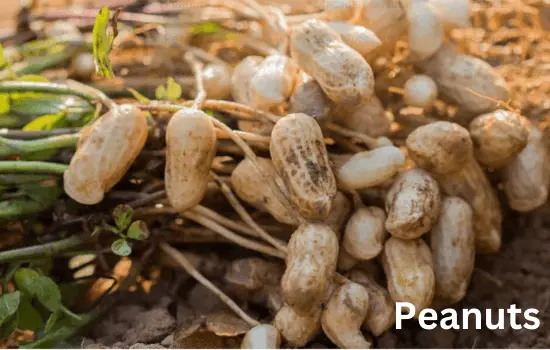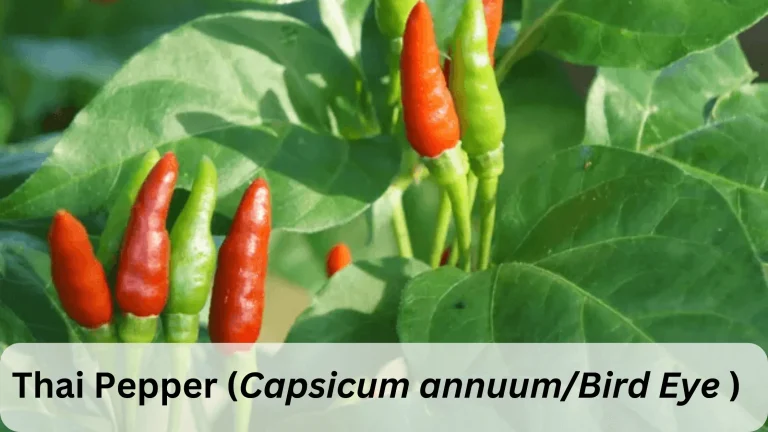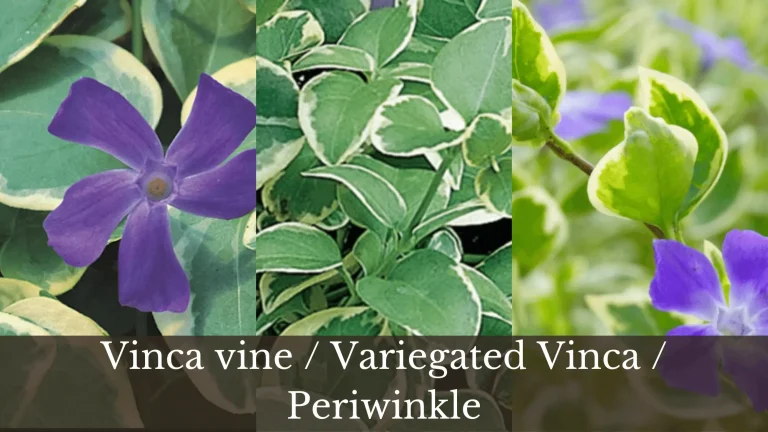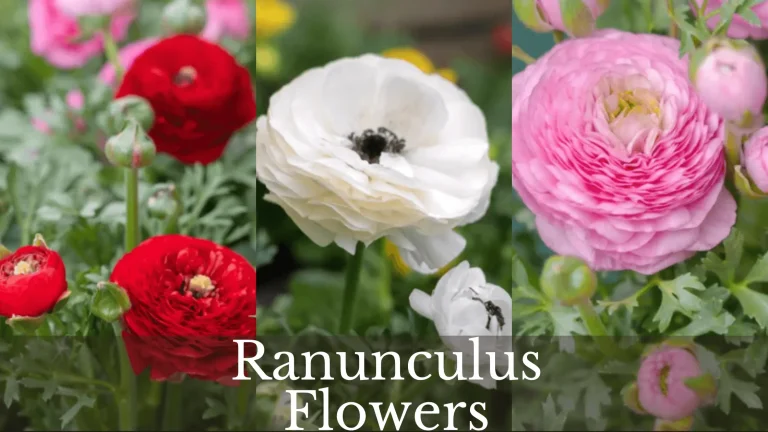How Are Peanuts Grown? – 9 Simple steps to Grow and Care
As the name shows, “peanuts,” many people get confused that it is a “nut.” Peanut is a legume having Pistachios peanuts, Spanish peanuts, and Valencia peanuts as different varieties. It is quite unusual concerning its flowering and fruiting. Do you know where peanuts bear flowers and fruits? Here, you will learn how are peanuts grown, harvested, and processed. Keep reading to learn more about it.
Facts about Peanuts
| Common Name | Peanuts |
| Scientific/Botanical Name | Arachis hypogaea |
| Family | Leguminosae or Fabaceae |
| Varieties | Pistachios Peanuts, Spanish Peanuts, Valenica Peanuts |
| Plant Type | Bushy – Annuals |
| Plant Height | 10-12 inches |
| Leaves | Oval Shaped |
| Sowing Time | May (Early Summer) |
| Soil Type | Well-drained, sandy, sandy loam |
| Climate | Hot, dry |
| Crop Growing Period | 4-5 months |
| Flowers | Pistachios Peanuts, Spanish Peanuts, Valencia Peanuts |
| Flowering Time | 40-45 days after germination |
| Harvesting | Pegs under the soil with pods containing fruit |
| Fruits | Pods with Kernal |
| Special character | Pegs under soil with pods containing fruit |
| Harvesting Time | September – October |
| Important Ingredients | Protein, Oil, Fibres |
Peanuts grow well in hot, dry weather with sandy or sandy loam soil. In production, China stands at first with 37% of the world’s production, with India at second with 13% production. Some other leading countries are Argentina, Burma, New Guinea, Nigeria, Sudan, and Tanzania.

You can adopt it as a Hobby Plantation. It can easily be grown in gardens, terraces, and balconies with well-drained sandy soil. Just consider them provision of proper light.
How are Peanuts Grown?
The process starts with the sowing of the seed. The seed planning is usually done usually done in early spring, from April to May. The soil temperature (65-70°F) is perfect for germination and initial stages. The rising soil temperature in the early summer days is perfect for the initial growth of the peanut vines.
How are Peanuts Grown Organically? – Seed Planting
Seeds from the previous crops are sown in well-prepared soil, 1.5 – 2 inches deep. These seeds are the very thing we eat. Sowing the seeds in rows 12-18 inches apart is recommended. It helps in the easy management of the crop and easy harvesting.
Germination
The germination starts after 8-10 days. The seedlings crack the soil and emerge. The early plant is oval-leafed, growing up to 15-18 inches in 4 weeks.
How much water do Peanuts Require?
Peanuts mostly grow in rain-fed areas. They require less water, but frequent irrigation is a must. Keeping the top 1.5 to 2 inches of the soil moist will be good for better growth. If there is no rain, apply artificial irrigation. However, they require a little does of nutrients to start nodulation. They are leguminous plants and can capture nitrogen from the atmospheric contents of nitrogen present in the air.
It requires only 3 gallons of water to produce 1 ounce of peanuts, while an ounce of almond requires 29 gallons. If there is no rain, you need to apply water. Otherwise, it is good to go with a light shower of rain.
Remember
Remember: 1 US gallon = 3.785 liters
Flowering in Peanuts
This is a short-duration crop with 4-5 months crop growth period. Flowering starts in peanuts after 40-45 days of germination. These flowers are yellow. At the flowering stage, leaves turn yellow to brown. They fall off after pollination, and the plant switches from the vegetative to the reproductive stage. Flowers get pollinated and turned into fertilized ovaries.
There is a unique mechanism in Peanut. It flowers above the ground, but fruiting starts under the soil. These fruits are attached to the stem with a thread called a peg. These pegs bear nuts in a tuft at the end with multiple pods.
What is pegging? – A Unique Feature of Peanuts
Peanuts have a unique feature of fruiting called pegging. The peg is a thread that enlarges from the stem, away, and down into the soil. Suppose it forms a small stem with a peanut embryo at its tip. After penetration in the soil, the embryo turns horizontal in position.
This horizontal embryo matures and turns into mature peanut pods. At the same time, the plant continues to form flowers, and the pegging goes on, making more and more peanuts in the soil. This process continues until a single plant produces 35-40 pods.
How Peanuts are harvested? – The Combing Process
Check for the crop maturity. At the age of 120-140 days, most of the leaves are usually shed, and the pods are mature. Just wait for the suitable soil moisture. In heavily moist soil, the clots will restrict the harvesting process.
At first, a digger is run in the field. The blade of the digger must be more than 6 inches long to harvest every pod. The blade of the digger uproots the soil, and the shaker lifts the plant gently the soil and shakes it. This shaking makes the plant upside down. This makes the harvesting easy.

Uprooting, lifting, shaking, and getting the peanuts from the soil and the plant is called combing. The peanuts have more than 20% moisture when harvested. They are storage-dried to lower the moisture level by up to 10%. After attaining suitable moisture for storage, a combined machine separates peanuts by the hopper while depositing the dried vines back in the field.
How are Peanuts Processed?
When the vines are 120-140 days, they are ready to harvest. As the fruit is underground, it is pulled over with the help of machines. The soil is turned over. The peanut fruit is left in the field to dry for 5-7 days. After they are dried with 12-15% moisture in the nuts, they are separated from the vines with a combined machine and are blown into wagons, containers, or trailers.
From here, the processing of the peanuts starts. They are further processed in wagons by passing warm air to let them dry further. The moisture level is further decreased to 10-12%. At this moisture level, the peanuts are graded based on the size and variety. Large-size peanuts are low in fat content and are thus liked the most.
Peanut Growing Cycle
Peanuts have a unique growing cycle from seed to peg and pods. The pods are equally important for seeding and eating. However, it differs from its leguminous cousins, like snow peas and snap peas, in its growing habit.
9 Simple Steps to Grow Peanuts
The plant grows as a vine, 10-12 inches tall, but the pegs penetrate deep in the soil. Pods grow and mature there and are extracted at maturity with the blade of the digger. The following fig. and the steps will explain how peanuts are grown.
- Shell Peanut Pods: Shell the pods for seed.
- Seeds are planted in the early summer, mostly in May.
- Germination starts in 8-10 days to give out oval-shaped leaves.
- The plant takes 85-90 days for a reproductive phase and grows up to 12 inches tall.

- After that, the reproductive stage starts.
- Yellow flowers produced on the plants
- A special steam-like threaded structure, “peg,” develops with seed pods at the tip. Once the peg develops, stop watering.
- This tip goes down in the soil where seed pods grow and mature.
- Mature pods are harvested at 120-140 days (September/October). The harvested pods are ready to eat as a source of protein and oil. You can store them at a 10-12% moisture level for the next growing season, and the cycle starts again.

Importance of Peanuts
Peanuts are a source of protein and oil. They have several other important aspects. George Washington discovered and developed different products from peanuts, such as cooking oil, stains, laxatives, sauces, soap, and milk. They are the source of fiber, too. There is a need to add some nuts to our daily life.

FAQs
I’m Dr Qaiser Maqsood (PhD), a dedicated researcher and expert in Biological Sciences, Gardening, Bio-Diversity, Ecology, and Environmental Sciences. I’m much concerned about Environmental Pollution, Climate Change, Plantation, Gardening, and Global Warming. My passion is to explore innovative solutions in all these fields.
Be aware that we have ONLY ONE EARTH. Protect it!!






